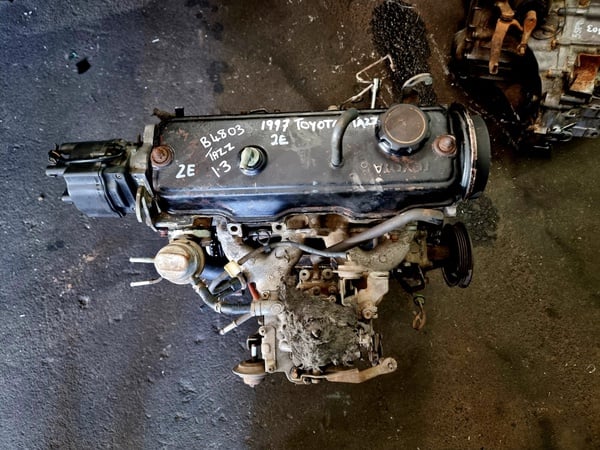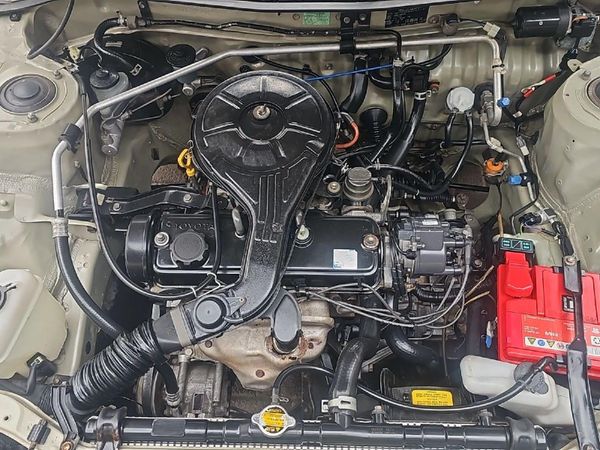Toyota Tazz: An Affordable Car That Doesn’t Compromise on Quality
Toyota Tazz: An Affordable Car That Doesn’t Compromise on Quality
Blog Article
Discover the current Patterns in Engine Modern Technology Through Tazz
In the rapidly progressing landscape of automotive innovation, Tazz stands at the forefront, highlighting considerable developments in engine systems that prioritize both innovation and sustainability. tazz. From crossbreed engines that optimize fuel efficiency to the introduction of hydrogen fuel cells, the trends forming contemporary powertrains are not just improving efficiency yet likewise attending to important environmental difficulties. As the sector proceeds to press limits, it is necessary to take into consideration exactly how these advancements will influence future transportation solutions and the broader effects for international power usage. What lies in advance in this crucial improvement?
Crossbreed Engine Innovations
Crossbreed engine innovations stand for a critical change in vehicle technology, incorporating the benefits of inner combustion engines with electrical propulsion systems. This combination not just improves gas effectiveness yet likewise reduces exhausts, meeting significantly strict ecological policies. By making use of both energy resources, hybrid engines can optimize performance, supplying power when needed while preserving fuel throughout less demanding motoring conditions.
Recent innovations in hybrid modern technology include enhancements in battery efficiency and regenerative braking systems. These innovations enable for better energy recuperation during deceleration, which can be rerouted to assist in acceleration or power accessory systems. Producers are concentrating on compact styles and light-weight materials to make best use of the effectiveness of crossbreed powertrains.
The development of plug-in crossbreeds has likewise broadened the marketplace, making it possible for motorists to bill their lorries using basic electrical outlets. This function usually allows for significant all-electric range, further decreasing dependence on traditional fuels. tazz. As the automotive industry remains to evolve, hybrid engine technologies are expected to play an important function in connecting the space between conventional vehicles and fully electrical versions, supplying a transitional option that deals with diverse consumer needs and choices
Advances in Electric Powertrains
The automotive landscape is swiftly advancing, with electrical powertrains becoming a leading force in lasting transport. Developments in electric car (EV) technology are considerably enhancing performance, individual, and performance experience. Trick technologies consist of enhancements in battery chemistry, which have increased power thickness, minimized billing times, and prolonged overall battery life.
Solid-state batteries, for instance, assure to revolutionize the market by offering greater security and efficiency contrasted to traditional lithium-ion cells. In addition, developments in regenerative stopping systems are enabling automobiles to recover power throughout deceleration, adding to overall effectiveness.
Along with battery innovation, electrical motor layouts are becoming much more innovative. Innovations such as integrated motors and progressed thermal monitoring systems are helping to optimize power shipment and minimize weight, inevitably enhancing car characteristics.

Jointly, these developments highlight the commitment to transition towards cleaner, much more efficient transportation options, placing electric powertrains at the forefront of automotive innovation.
The Rise of Hydrogen Gas Cells
Significantly, hydrogen gas cells are getting grip as a practical option to conventional internal combustion engines and battery electrical automobiles. This modern technology uses the chemical power saved in hydrogen, transforming it right into electricity via an electrochemical response with oxygen. The main result of this procedure is water, making hydrogen gas cells an eco-friendly option with absolutely no emissions at the tailpipe.

Car manufacturers are increasingly investing in hydrogen fuel cell modern technology, identifying its potential for long-range applications and fast refueling abilities that measure up to conventional fuels. Additionally, industries such as durable transportation and public transportation are specifically fit for hydrogen gas cells, where battery electric solutions may fall short due to weight and range restrictions.
As research study and financial investment proceed to broaden, hydrogen gas cells are positioned to play a substantial duty in the future landscape of tidy transport check my blog and power remedies.
Enhancements in Internal Combustion Engines
Innovations in internal combustion engine (ICE) innovation are transforming traditional automobiles to fulfill contemporary ecological standards and efficiency expectations. Among the most considerable improvements includes the integration of sophisticated fuel injection systems. These systems optimize the air-fuel mixture, boosting burning effectiveness and leading to decreased emissions. Straight gas shot, as an example, permits better atomization of gas, causing more complete burning and improved power output.
Additionally, turbocharging has actually acquired prominence, enabling smaller engines to provide higher efficiency without the weight of larger engines - tazz. This modern technology not only enhances effectiveness yet likewise adds to reduce fuel usage. Variable shutoff timing systems are likewise being refined, making it possible for engines to adapt to different driving conditions for enhanced torque and responsiveness
In addition, making use of light-weight materials in engine building and construction is becoming typical, further improving gas efficiency by minimizing total car weight. Engine control devices (ECUs) are increasingly advanced, making it possible for real-time adjustments that enhance efficiency and emissions.
These enhancements jointly signify a critical change in ICE technology, aligning with worldwide sustainability objectives while still providing the performance motorists get out of their automobiles. As the industry develops, these enhancements proceed to form the future of traditional automobile engineering.
Future Patterns in Engine Performance
Substantial advancements in engine efficiency are expected as makers concentrate on incorporating sophisticated modern technologies to meet stringent environmental regulations and consumer demands. The shift towards electrification, hybrid systems, and alternative fuels is reshaping the automotive landscape, driving developments that enhance fuel economic climate and decrease discharges.
One of the essential trends is the implementation of advanced products and making strategies. High-strength alloys and lightweight composites contribute to reduced vehicle weight, hence boosting general effectiveness. Furthermore, the adoption of turbocharging and variable shutoff timing modern technologies permits enhanced power output from smaller engines, further boosting gas economic climate.

Verdict
Developments in crossbreed engine systems, electrical powertrains, and hydrogen gas cells show a commitment to decreasing discharges while improving efficiency. Renovations in inner combustion engines and a focus on click resources lightweight materials contribute to overall engine effectiveness.
From hybrid engines that enhance gas performance to the appearance of hydrogen gas cells, the fads forming modern-day powertrains are not just enhancing efficiency yet also addressing vital environmental difficulties.Hybrid engine developments represent a critical shift in automobile innovation, combining the benefits of internal burning engines with electrical propulsion systems.In addition, turbocharging has actually gotten importance, enabling smaller engines to deliver greater efficiency without the weight of bigger engines. Furthermore, the adoption of turbocharging and variable valve timing technologies permits for enhanced power outcome from smaller engines, further boosting gas economic climate.
Enhancements in internal combustion engines and Homepage an emphasis on light-weight materials contribute to total engine effectiveness.
Report this page